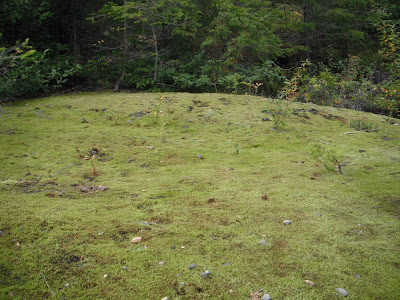Sunday, October 23, 2011
Friday, October 21, 2011
XIII.
Summary of the paper:
After an introduction on R. Hooke (1635-1703) and his Micrographia (1665), comments are made on the illustration and text of Observation XXI, "Of Moss and several other small vegetative Substances." The illustration may represent more than one species, of which Bryum capillare Hedw. sens. lat. may be one. Attention is drawn to: (1) the lack of reference in the text to the cell structure of the moss leaves in the illustration, (2) Hooke's view of spore disperal and the possibilty of spontaneous generation, (3) a possible reference to moss protonema.
Robert Hooke's microscope.
Observation XXI begins with statement that "Moss is a plant, that the wisest of Kings thought neither unworthy of his speculation, nor his Pen, and though amongst Plants it be in bulk one of the smallest, yet it is not the least considerable: for as to its shape, it may compare for the beauty of it with any Plant that grows and bears a much bigger breadth (p. 142)"
'Kings' refers to Solomon (p. 142). In footnote 3 Richards quotes Francis Bacon "The scripture saith Salomon wrote a naturall history from the Cedar of Libanus to the mosse growing upon the wall (for so the best translations have it)"
1 Kings 4:33 King James Version "And he spake of trees, from the cedar tree that is in Lebanon even unto the hyssop that springeth out of the wall: he spake also of beasts, and of fowl, and of creeping things, and of fishes". The hyssop being a moss.
On page 143 I enjoyed the following quote: "Moss growing on a skull of a dead man". It refers to the "Muscus ex craneo humano". Herbals were quite fond of having moss growing on a skull. In the postscript, Richards mentions a Dr. Wilkins who asked Hooke to "be ordered" to demostrate "by moss seed shown by him" to "make moss grow on a dead man's skull". I think I will make it the subject of a later post.
Monday, October 17, 2011
XII.
"Vancouver! Vancouver! This is it!" - David A. Johnston
I spent the weekend at Mount St. Helens.
Trail of Two Forests.
After a lava flow 2,000 years ago, mosses were one the first to grow providing viability and fundamentality for a newly emerging ecosystem.
Lava Canyon.
Ape Cave.
Windy Ridge.
A toppled sign at the beginning of the trail forbade traffic from the designated path as revegetation is in progress. Growth is groovy.
I love seeing the natural poetry occuring between mosses, fungi, and lichen.
Sunday, October 9, 2011
XI.
"The Oregonians naturally resent the intrusion of the mosses on their roofs, foundations, in lawns, and where not? Some mosses and lichens are virtually parasitic on the fruit trees, so it is no wonder that one gentlemen, in my hearing called them 'impudent' plants. They are literally thurst under one's feet, for after a winter's wood pile is stowed away in its owner's cellar, a quantity of moss debris rich in lichens, hepatics, and mosses may be found on street and boulevard"
Mary C. Van Wert, The Lure of the Oregon Mosses, The Bryologist, Vol. 30 No. 5 Sep. 1927, pg. 89.
http://www.jstor.org/stable/3238912
Mary C. Van Wert, The Lure of the Oregon Mosses, The Bryologist, Vol. 30 No. 5 Sep. 1927, pg. 89.
http://www.jstor.org/stable/3238912
Subscribe to:
Posts (Atom)





















